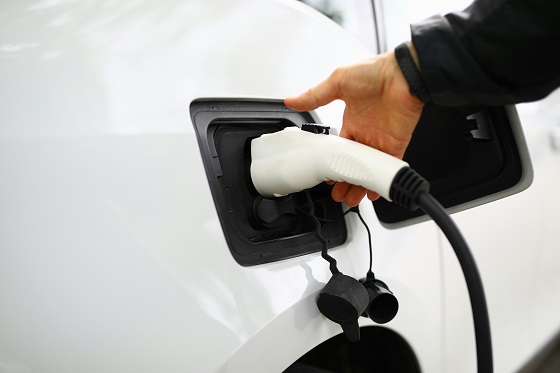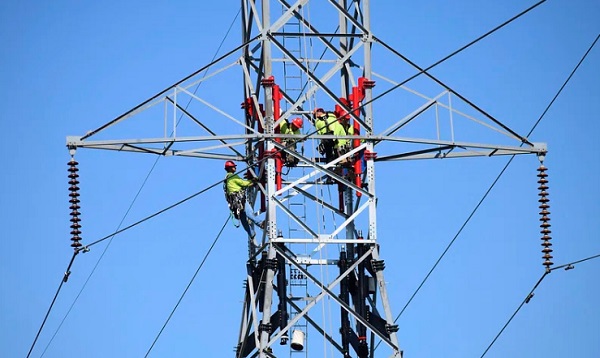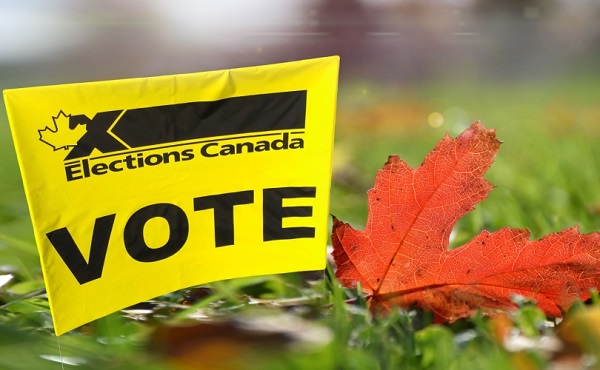Business
What if Canada’s Income Tax Rate Was Zero?


 By David Clinton
By David Clinton
It won’t happening. And perhaps it shouldn’t happen. But we can talk.
By reputation, income tax is an immutable fact of life. But perhaps we can push back against that popular assumption. Or, to put it a different way, thinking about how different things can be is actually loads of fun.
That’s not to suggest that accurately anticipating the full impact of blowing up central economic pillars is simple. But it’s worth a conversation.
First off, because they’ve been around so long, we can easily lose sight of the fact that income taxes cause real economic pain. The median Canadian household earns around $85,000 in a year. Of that, some 13 percent ($11,000) is lost to federal income tax. Provincial income tax and sales taxes, of course, drive that number a lot higher. If owning a house is out of reach for so many Canadians, that’s one of the biggest reasons why.
Having said that, the $200 billion or so in personal income taxes that Canada collects each year represents around 40 percent of federal spending. In fact, in the absence of other policy changes, eliminating federal personal income tax would probably lead to significant drops in business tax revenues too. (I could see many small businesses choosing to maximize employee salaries to reduce their corporate tax liability.)
So if we wanted to cut taxes without piling on even more debt, we’d need to replace that amount either by finding alternate revenue sources or by cutting spending. If you’ve been keeping up with The Audit, you’ve already seen where and how we might find some serious budget savings in previous posts.
But for fascinating reasons, some of that $200 billion (or, including corporate taxes, $300 billion) shortfall could be made up by wiping out income tax itself. How’s that?
For one thing, many government entitlements and payouts essentially exist to make up for income lost through taxes. For example, the federal government will spend around $26 billion on child tax credits (CCB) in 2025. Since those payments are indexed to income, eliminating federal income tax would, de facto, raise everyone’s income. That increase would drop CCB spending by as much as $15 billion. Naturally, we’d want to reset the program eligibility thresholds to ensure that low-income working families aren’t being hurt by the change, but the savings would still be significant.
There are more payment programs of that sort than you might imagine. Without income taxes to worry about:
- The $6.2 billion GST/HST credit would cost us around $3 billion less each year.
- The Canada Workers Benefit (CWB) could cost $1.5 billion dollars less.
- The Old Age Security (OAS) Clawback would likely generate an extra billion dollars each year in taxes.
- The Guaranteed Income Supplement for low-income OAS recipients could save $4 billion a year.
Even when factoring in for threshold recalculations to protect vulnerable families from unintended consequences, all those indirect consequences of a tax cut could easily add up to $20 billion in federal spending cuts. And don’t forget how the cost of administering and enforcing the income tax system would disappear. That’ll save us most of the $11 billion CRA costs us each year.
Nevertheless, last I heard, $30 billion (in savings) was a long, long way from $300 billion (in tax revenue shortfalls). No matter how hard we look, we’re not going to find $270 billion in government waste, fraud, and marginal programs to eliminate. And adding more government debt will benefit exactly no one (besides bond holders).
Ok then, let’s say we can find $100 billion in reasonable cuts (see The Audit for details). That would get us close to half way there. But it would also generate some serious economic turbulence.
On the one hand, such cuts would require dropping hundreds of thousands of workers off the federal payroll¹. It would also exert powerful downward pressure on our gross domestic product (GDP).
On the plus side however, a drop in government borrowing of this scale would likely reduce interest rates. That, in turn, could spark private investment activities that partially offset the GDP hit. If you add the personal wealth freed up by our income tax cuts to that mix, you’d likely see another nice GDP bump from sharp increases in household spending and investments.
Precisely predicting how a proposed change might affect all these moving parts is hard. Perhaps the ideal scenario would involve 20 percent or 50 percent cuts to taxes rather than 100 percent. Or maybe we’d be better off by playing around with sales tax rates. But I’m not convinced that anyone is even seriously and objectively thinking about our options right now.
One way or the other, the impact of such radical economic changes would be historic. I think it would be fascinating to develop data models to calculate and rank the macro economic consequences of applying various combinations of variables to the problem.
But taxation is a problem. And it’d be an important first step to recognize it as such.
Although on the bright side, as least they wouldn’t have to worry about delayed or incorrect Phoenix payments anymore.
Automotive
Major automakers push congress to block California’s 2035 EV mandate

 MxM News
MxM News
Quick Hit:
Major automakers are urging Congress to intervene and halt California’s aggressive plan to eliminate gasoline-only vehicles by 2035. With the Biden-era EPA waiver empowering California and 11 other states to enforce the rule, automakers warn of immediate impacts on vehicle availability and consumer choice. The U.S. House is preparing for a critical vote to determine if California’s sweeping environmental mandates will stand.
Key Details:
-
Automakers argue California’s rules will raise prices and limit consumer choices, especially amid high tariffs on auto imports.
-
The House is set to vote this week on repealing the EPA waiver that greenlit California’s mandate.
-
California’s regulations would require 35% of 2026 model year vehicles to be zero-emission, a figure manufacturers say is unrealistic.
Diving Deeper:
The Alliance for Automotive Innovation, representing industry giants such as General Motors, Toyota, Volkswagen, and Hyundai, issued a letter Monday warning Congress about the looming consequences of California’s radical environmental regulations. The automakers stressed that unless Congress acts swiftly, vehicle shipments across the country could be disrupted within months, forcing car companies to artificially limit sales of traditional vehicles to meet electric vehicle quotas.
California’s Air Resources Board rules have already spread to 11 other states—including New York, Massachusetts, and Oregon—together representing roughly 40% of the entire U.S. auto market. Despite repeated concerns from manufacturers, California officials have doubled down, insisting that their measures are essential for meeting lofty greenhouse gas reduction targets and combating smog. However, even some states like Maryland have recognized the impracticality of California’s timeline, opting to delay compliance.
A major legal hurdle complicates the path forward. The Government Accountability Office ruled in March that the EPA waiver issued under former President Joe Biden cannot be revoked under the Congressional Review Act, which requires only a simple Senate majority. This creates uncertainty over whether Congress can truly roll back California’s authority without more complex legislative action.
The House is also gearing up to tackle other elements of California’s environmental regime, including blocking the state from imposing stricter pollution standards on commercial trucks and halting its low-nitrogen oxide emissions regulations for heavy-duty vehicles. These moves reflect growing concerns that California’s progressive regulatory overreach is threatening national commerce and consumer choice.
Under California’s current rules, the state demands that 35% of light-duty vehicles for the 2026 model year be zero-emission, scaling up rapidly to 68% by 2030. Industry experts widely agree that these targets are disconnected from reality, given the current slow pace of electric vehicle adoption among the broader American public, particularly in rural and lower-income areas.
California first unveiled its plan in 2020, aiming to make at least 80% of new cars electric and the remainder plug-in hybrids by 2035. Now, under President Donald Trump’s leadership, the U.S. Transportation Department is working to undo the aggressive fuel economy regulations imposed during former President Joe Biden’s term, offering a much-needed course correction for an auto industry burdened by regulatory overreach.
As Congress debates, the larger question remains: Will America allow one state’s left-wing environmental ideology to dictate terms for the entire country’s auto industry?
Business
Net Zero by 2050: There is no realistic path to affordable and reliable electricity

 By Dave Morton of the Canadian Energy Reliability Council.
By Dave Morton of the Canadian Energy Reliability Council.
Maintaining energy diversity is crucial to a truly sustainable future
Canada is on an ambitious path to “decarbonize” its economy by 2050 to deliver on its political commitment to achieve net-zero greenhouse gas (GHG) emissions. Although policy varies across provinces and federally, a default policy of electrification has emerged, and the electricity industry, which in Canada is largely owned by our provincial governments, appears to be on board.
In a November 2023 submission to the federal government, Electricity Canada, an association of major electric generators and suppliers in Canada, stated: “Every credible path to Net Zero by 2050 relies on electrification of other sectors.” In a single generation, then, will clean electricity become the dominant source of energy in Canada? If so, this puts all our energy eggs in one basket. Lost in the debate seem to be considerations of energy diversity and its role in energy system reliability.
What does an electrification strategy mean for Canada? Currently, for every 100 units of energy we consume in Canada, over 40 come to us as liquid fuels like gasoline and diesel, almost 40 as gaseous fuels like natural gas and propane, and a little less than 20 in the form of electrons produced by those fuels as well as by water, uranium, wind, solar and biomass. In British Columbia, for example, the gas system delivered approximately double the energy of the electricity system.
How much electricity will we need? According to a recent Fraser Institute report, a decarbonized electricity grid by 2050 requires a doubling of electricity. This means adding the equivalent of 134 new large hydro projects like BC’s Site C, 18 nuclear facilities like Ontario’s Bruce Power Plant, or installing almost 75,000 large wind turbines on over one million hectares of land, an area nearly 14.5 times the size of the municipality of Calgary.
Is it feasible to achieve a fully decarbonized electricity grid in the next 25 years that will supply much of our energy requirements? There is a real risk of skilled labour and supply chain shortages that may be impossible to overcome, especially as many other countries are also racing towards net-zero by 2050. Even now, shortages of transformers and copper wire are impacting capital projects. The Fraser Institute report looks at the construction challenges and concludes that doing so “is likely impossible within the 2050 timeframe”.
How we get there matters a lot to our energy reliability along the way. As we put more eggs in the basket, our reliability risk increases. Pursuing electrification while not continuing to invest in our existing fossil fuel-based infrastructure risks leaving our homes and industries short of basic energy needs if we miss our electrification targets.
The IEA 2023 Roadmap to Net Zero estimates that technologies not yet available on the market will be needed to deliver 35 percent of emissions reductions needed for net zero in 2050. It comes then as no surprise that many of the technologies needed to grow a green electric grid are not fully mature. While wind and solar, increasingly the new generation source of choice in many jurisdictions, serve as a relatively inexpensive source of electricity and play a key role in meeting expanded demand for electricity, they introduce significant challenges to grid stability and reliability that remain largely unresolved. As most people know, they only produce electricity when the wind blows and the sun shines, thereby requiring a firm back-up source of electricity generation.
Given the unpopularity of fossil fuel generation, the difficulty of building hydro and the reluctance to adopt nuclear in much of Canada, there is little in the way of firm electricity available to provide that backup. Large “utility scale” batteries may help mitigate intermittent electricity production in the short term, but these facilities too are immature. Furthermore, wind, solar and batteries, because of the way they connect to the grid don’t contribute to grid reliability in the same way the previous generation of electric generation does.
Other zero-emitting electricity generation technologies are in various stages of development – for example, Carbon Capture Utilization and Storage (CCUS) fitted to GHG emitting generation facilities can allow gas or even coal to generate firm electricity and along with Small Modular Reactors (SMRs) can provide a firm and flexible source of electricity.
What if everything can’t be electrified? In June 2024, a report commissioned by the federal government concluded that the share of overall energy supplied by electricity will need to roughly triple by 2050, increasing from the current 17 percent to between 40 and 70 percent. In this analysis, then, even a tripling of existing electricity generation, will at best only meet 70 percent of our energy needs by 2050.
Therefore, to ensure the continued supply of reliable energy, non-electrification pathways to net zero are also required. CCUS and SMR technologies currently being developed for producing electricity could potentially be used to provide thermal energy for industrial processes and even building heat; biofuels to replace gasoline, diesel and natural gas; and hydrogen to augment natural gas, along with GHG offsets and various emission trading schemes are similarly
While many of these technologies can and currently do contribute to GHG emission reductions, uncertainties remain relating to their scalability, cost and public acceptance. These uncertainties in all sectors of our energy system leaves us with the question: Is there any credible pathway to reliable net-zero energy by 2050?
Electricity Canada states: “Ensuring reliability, affordability, and sustainability is a balancing act … the energy transition is in large part policy-driven; thus, current policy preferences are uniquely impactful on the way utilities can manage the energy trilemma. The energy trilemma is often referred to colloquially as a three-legged stool, with GHG reductions only one of those legs. But the other two, reliability and affordability, are key to the success of the transition.
Policymakers should urgently consider whether any pathway exists to deliver reliable net-zero energy by 2050. If not, letting the pace of the transition be dictated by only one of those legs guarantees, at best, a wobbly stool. Matching the pace of GHG reductions with achievable measures to maintain energy diversity and reliability at prices that are affordable will be critical to setting us on a truly sustainable pathway to net zero, even if it isn’t achieved by 2050.
Dave Morton, former Chair and CEO of the British Columbia Utilities Commission (BCUC), is with the Canadian Energy Reliability Council.
-

 2025 Federal Election1 day ago
2025 Federal Election1 day agoMark Carney: Our Number-One Alberta Separatist
-

 2025 Federal Election1 day ago
2025 Federal Election1 day agoNine Dead After SUV Plows Into Vancouver Festival Crowd, Raising Election-Eve Concerns Over Public Safety
-

 2025 Federal Election1 day ago
2025 Federal Election1 day agoColumnist warns Carney Liberals will consider a home equity tax on primary residences
-

 International1 day ago
International1 day agoJeffrey Epstein accuser Virginia Giuffre reportedly dies by suicide
-

 2025 Federal Election1 day ago
2025 Federal Election1 day agoCanada is squandering the greatest oil opportunity on Earth
-

 International21 hours ago
International21 hours agoU.S. Army names new long-range hypersonic weapon ‘Dark Eagle’
-

 Addictions10 hours ago
Addictions10 hours agoFour new studies show link between heavy cannabis use, serious health risks
-

 Business12 hours ago
Business12 hours agoNet Zero by 2050: There is no realistic path to affordable and reliable electricity

